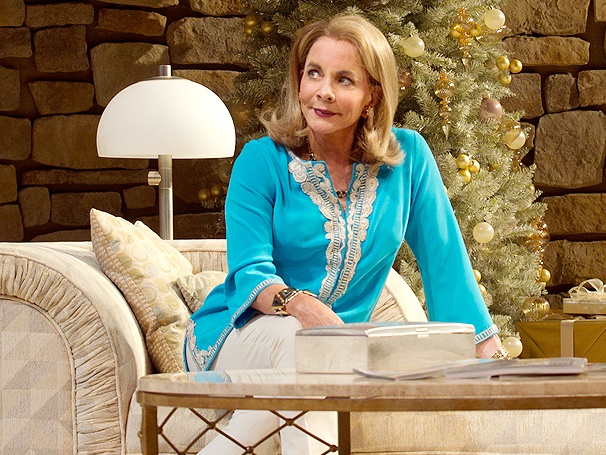 |
| If Christine's father were still around, he would surely advise against gondola rides with masked strangers. |
Well, I finally saw it. A mere 24 years after its Broadway premiere and approximately 10 years after I became seriously interested in musical theatre, I finally walked myself over to the Majestic Theatre and saw the theatrical phenomenon that is The Phantom of the Opera.
How have I never seen Phantom, you ask? Several reasons. First and foremost, I just don’t like Andrew Lloyd Webber. In general, I find his shows to be overwrought, underwritten affairs where big ballads trump petty concerns like storytelling and character development. In fact, at several points in his career I think he was actively mocking the theatergoing public, seeing just how many people he could get to buy tickets to plotless concerts about dancing cats or absurdist spectacles involving roller-skating trains. Having heard the Phantom soundtrack, I found the show to rely too heavily on reprises disguised as new songs (it sounds as if a grand total of five melodic themes were continuously recycled, with new lyrics, during the show’s two-and-a-half hour runtime). In addition, while listening to the show I felt no connection or emotional attachment to the two-dimensional characters, who could all die without the slightest bit of anguish from me. And finally, I had the misfortune of sitting through the atrocious film version, which only the show’s most ardent fans could find halfway tolerable. That experience effectively moved Phantom to the very bottom of my viewing list.
But now I’ve finally seen Broadway’s longest running smash, and I have to admit that it wasn’t as bad as I feared. I still find it deeply flawed, but I wasn’t offended by its ineptitude the way I am by certain other megamusicals featuring masked men and an abundance of special effects. In the plus column, most of the current collection of principals do a good job making some sort of sense out of their underwritten and often irrational characters, and help keep the show feeling fresh well into its third decade on Broadway. The performances border on melodramatic at times, but so does the show, and they are in a massive theatre that doesn’t really allow naturalistic acting. And regardless of my personal opinion of the quality of the score, it is certainly well-handled by the cast and orchestra, although the electronic keyboard is frighteningly pronounced at times.
The production’s strongest assets are Hal Prince’s staging and Maria Bjornson’s production design. The show is a spectacle in every sense of the word, but rarely do the special effects or massive set pieces impede its progress. Even after all these years, one can’t help but marvel at the ingenuity and efficiency of some of the set changes, and the excellent way Prince has deployed his actors on Bjornson’s ever-changing scenery. The initial descent into the Phantom’s underground lair during the title song or the Act II opener “Masquerade” are particularly thrilling, and while the famed chandelier could probably be improved upon with modern technology this one still gets the job done. Prince (and the various stage managers throughout the years) has done an excellent job of maintaining the show’s pace, which rarely flagged throughout the show’s slightly bloated runtime.
In fact, I would argue that without Prince and Bjornson, Phantom wouldn’t have become Phantom. Lloyd Webber’s score and book (which he co-authored with Richard Stilgoe) have their moments, but without the sheer theatricality Prince and Bjornson added to the proceedings I doubt the show would have run past the early 90s. But thanks to Prince and company, it recently celebrated a record-shattering 10,000 performance on the Great White Way with no end in sight, all due to an electric staging that covers many of the show’s flaws.
If I had to guess, I would say that is the secret to Phantom’s record-breaking success; the show tricks you into thinking its more complex than it actually is. The story has just enough depth that audiences can pretend they are seeing something deep and meaningful – a self-delusion not possible with pure fluff like Annie – but also contains the large cast and impressive sets people associate with a Broadway musical. While the characters aren’t that complex or believably written – Christine in particular oscillates between being a frightened child and strong-willed upstart – and there are multiple plot holes that are probably less apparent in Gaston Leroux’s source material, the spectacle lets the audience feel like they are seeing an event rather than just a play. And for all its dark undertones, the show never challenges us with any truly unsettling details or hard to digest moral gray areas, making it a family friendly entertainment that adults don’t want to claw their eyes out during. It is this exact same formula that has made Wicked into the Phantom of the new millennium, and there’s no reason to expect it to stop working anytime soon.
At this point, I honestly wouldn’t be surprised if Phantom runs forever. It has firmly entrenched itself as a Broadway institution, and is clearly the show to see for tourists, especially international ones. It is admittedly a good first Broadway show, and at this point has been running so long that people who first saw it as children are now returning with their kids in tow. So while I may not love it, I’ve at least seen what all the fuss is about, and have made my peace with the fact that it will never close. I honestly can’t imagine walking down 44th St. and not seeing its distinctive marquee.
And perhaps most importantly, it isn’t Cats.



